Canned Foods are perfect during SHTF situations. They are an excellent choice to stock when preparing for unexpected events like a global pandemics, natural disasters, and government issues that may lead to a sudden food shortage crisis. When choosing between the types and brands of canned foods, one thing to note is their best-by date as some can last years longer than others.
The shelf lives of canned foods are significantly influenced by their ingredients. Salt, for example, aids in the preservation of canned food, extending its shelf life. In general, canned meats last the longest, followed by vegetables, fish, beans, rice, broth, soup, and lastly, canned fruits.
This article will explore the shelf life of canned foods, provide you with tips on proper ways to store them, and discuss the signs that they have gone bad.
Best Canned Foods for Long Term Storage
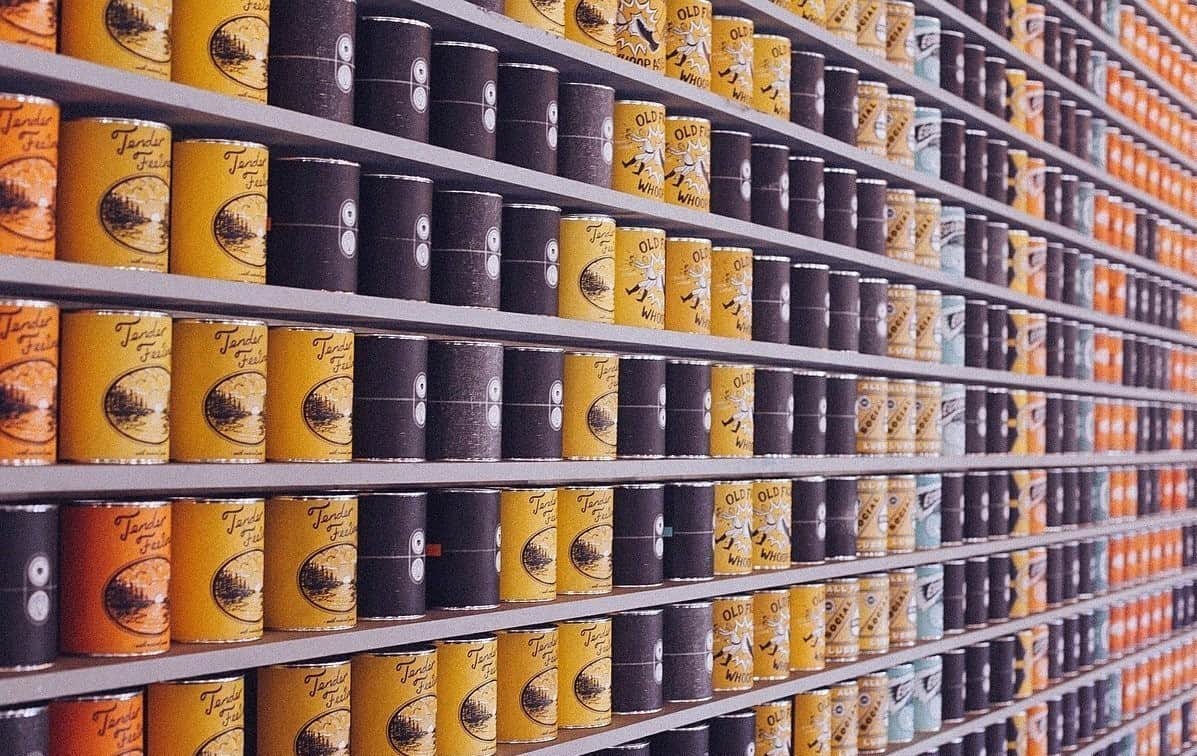
There’s an overwhelming number of canned foods on the market, but not all of them are suitable for long term storage. Long shelf life is the primary factor to consider when choosing which type/brand to buy. Also, keep in mind to buy in variety to avoid appetite fatigue and nutrient deficiency.
The following are the best canned foods that can last on your shelves for a long time and contain a variety of nutrients that are vital for survival during a SHTF situation:
Canned Meat (Shelf Life: 4-10 years)
Upon hearing “canned meat”, SPAM might be the first thing that comes to mind. It is one of the most popular brands, but there’re also other types of canned meat that is equally good, or even better, at providing essential nutrients. Consider the these brands:
- Beef: Libby’s Corned Beef,
- Chicken: Great Value Chunk Chicken Breast,
- Pork: Keystone Meats Canned Pork, Dak Premium Ham
- Mixed Meat: SPAM Classic
In general, canned meat has a higher salt content compared to other canned food. Hence, it can last longer on your shelf. Different manufacturers process their canned meat differently, meaning the taste will vary depending on the brand and the type of meat you’re getting. So, you should experiment to know which ones your family will likes the most.
When deciding which canned meat to store, you should also consider its other ingredients, such as sauces and sugar. Additional sauces in it will shorten its shelf life. Likewise, a high sugar content will result in faster quality degradation.
Most canned meat contain preservatives. However, they are present in low quantities only and don’t pose any harmful effects to the consumer. But, it may not be healthiest choice if one intends to survive with canned meat alone for a prolonged time.
If you want to make your selections “healthier,” you should get canned meat that’s made of grass-fed animals. Those animals tend to have leaner muscles compared with animals that consumed artificial feeds. Also, look for low-fat canned meat. Fat is necessary to keep a well-rounded diet, but canned meat is not exactly the healthiest source of it.
Canned Vegetables (Shelf Life: 3-8 years)
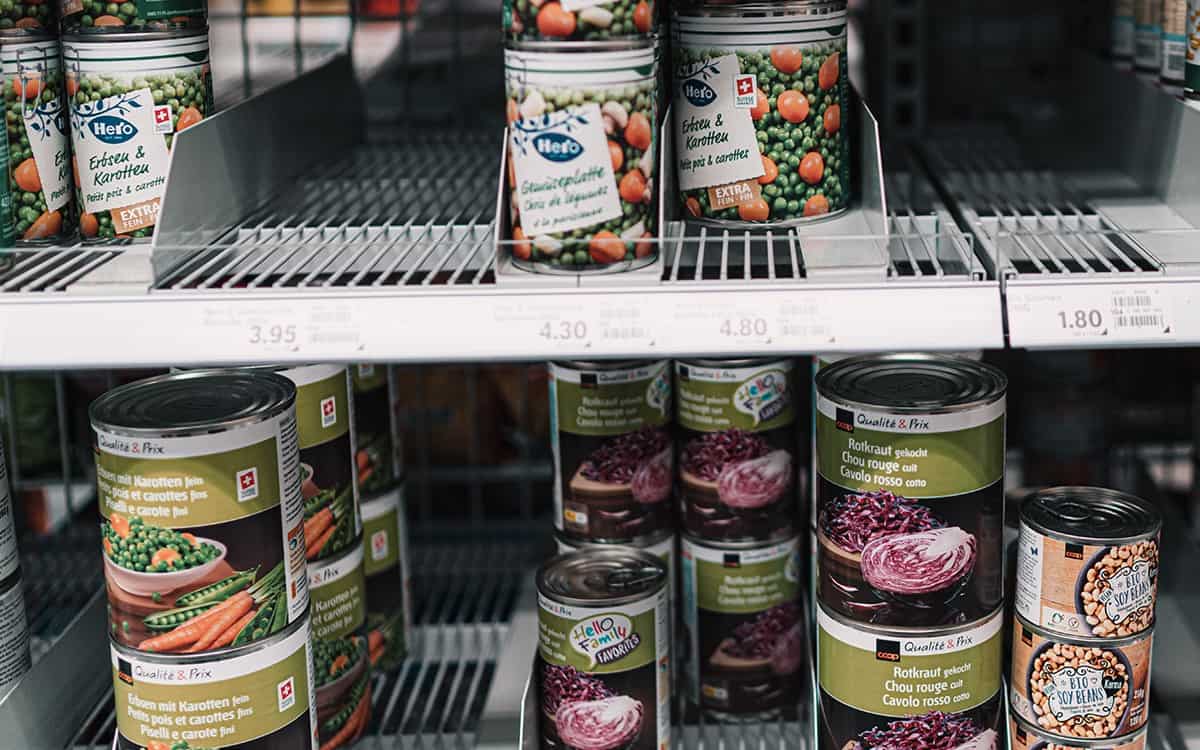
Most canned vegetables are preserved through pickling alone without other artificial chemicals, making them more natural and safer. Often, they are canned without additional sauces so they can last longer.
Canned vegetables are a must-have for any prepper. They are rich in minerals, vitamins, and fibers essential in maintaining a complete nutritional profile even during an SHTF situation. Having a variety of canned vegetables on your shelf will ensure that your family’s nutritional needs are met.
Raw and fresh vegetables are obviously more nutritious than canned vegetables, but they tend to perish faster. Despite having a lower nutritional value, canned vegetables can last on your shelf for several years. Also, they are easier to prepare and eat during emergencies.
The following are great canned vegetables that can provide you with the essential nutrients that your body needs to function properly during an SHTF situation:
- Beets: Libby’s Small Whole Beets
- Corn: Green Giant Whole Kernel Sweet Corn
- Tomatoes: Rotel Original Diced Tomatoes & Green Chilies
- Carrot: Libby’s Sliced Carrots
- Potatoes: Del Monte Foods Diced New Potatoes
- Spinach: Del Monte’s Canned Spinach
Canned Beans and Legumes (Shelf Life: 3-6 years)
Beans are an excellent source of proteins, calories, fiber, and carbohydrates. In particular, navy beans, kidney beans, and black beans are great options.
Baked beans have low sodium but high protein content. However, it is not the case for canned beans. Salt (source of sodium) is necessary to preserve canned goods, including beans. Therefore, canned beans have up to 10 times sodium content relative to baked beans. You can rinse off about half the sodium content by washing the canned beans. But, by doing so, you are also washing off some of the nutrients in it.
Canned beans, as previously mentioned, contain a fair amount of salt, allowing them to last longer on your shelf. The following are canned beans and legumes packed with vitamins and nutrients vital for survival:
- Baked Beans: Heinz Baked Beans
- Black Beans: 365 Everyday Value, Organic Black Beans
- Chickpeas: Goya Chick Peas, Garbanzos
- Pinto Beans: Bush’s Best Canned Chili Magic Chili Beans
- Kidney Beans: 365 Everyday Value, Organic Dark Red Kidney Beans
- Lima Beans: Del Monte Green Lima Beans
- Green Beans: Del Monte Green Beans Cuts
Canned Fish (Shelf Life: 3-6 years)
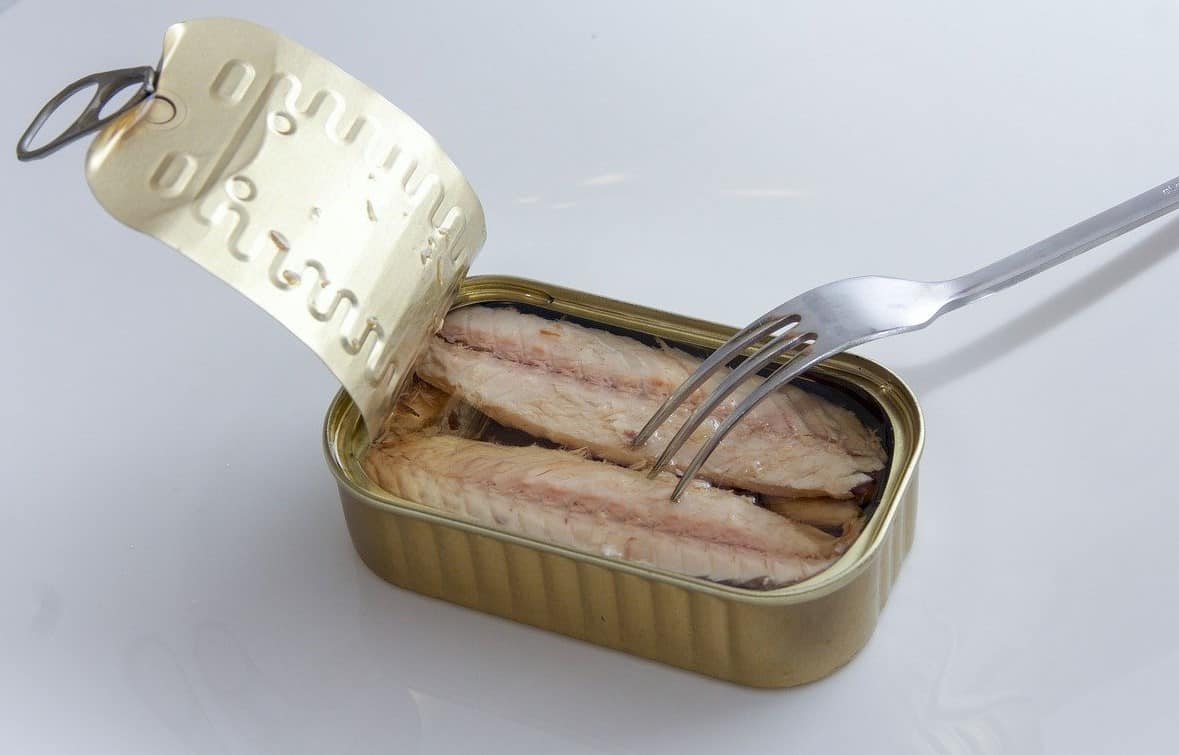
Canned fish is one of the healthiest types of canned foods out there, as most of it contain a high percentage of Omega-3 fatty acids that help lower the risk of heart problems. Other than that, canned fish may also have additional nutrients depending on the type of fish and particular ingredients included: such as fishbones, oils, fat, and sauces.
Fish caught in the wild is healthier and more nutritious than fish cultured in farms. Wild fish have more developed muscles since they lived in unlimited space, unlike farmed fish that lived in narrow pens. Wild fish lived by eating natural food, while farmed fish consumed artificial feeds, making canned wild fish healthier.
Canned fish with fishbones is better. Fishbones are a great source of calcium, and they are small enough not to cause ingestion problems. Canned fish with high-fat is also great. Fishes rich in fat like salmon and tuna are an excellent source of Omega-3 fatty acids, and they provide more nutrition compared with lean fish.
On the other hand, you should try to avoid canned fish that have sauces like tomato sauce. The fish on its own will not go bad for several years. However, the sauce has a short shelf life, making the canned fish’s quality degrade faster. Similarly, you should refrain from getting canned fish that contains a high percentage of oil other than olive oil.
Overall, canned fish is a must-have on a prepper’s storage shelf. It is nutritious and can last for several years. The following are canned fish that you should consider:
- Tuna: Genova Yellowfin Tuna in Pure Olive Oil
- Salmon: Wild Planet Wild Sockeye Salmon
- Mackerel: Season Fillets of Mackerel in Olive Oil
- Anchovies: Crown Prince Flat Anchovies in Olive Oil
- Trout: Trader Joe’s Smoked Trout Fillets in Oil Skinless
- Sardines: Wild Planet Wild Sardines
Canned Rice (Shelf Life: 2-6 years)
Rice is a staple part of the diet of many cultures. It has a high-calorie content, and it’s rich in minerals, vitamins, carbohydrates, and protein. Both canned and uncanned rice provide these nutrients; however, canned rice provides them in lower levels.
The nutritional value may differ for each type of rice, but not significantly. There are many different types of canned rice to consider, for instance brown rice is generally healthier than white rice. However, due to its high oil content, it tends to last shorter.
Interestingly, rice absorbs a lot of water. A cup of dry rice can absorb up to 2 cups of water when cooked. Most canned rice is cooked prior to canning, so you can expect that most of this canned food’s content is water.
Canned rice has the advantage of being easy-to-prepare in case of emergency. You can eat it directly from the can or heat it in a pan for a few minutes – either way works and is safe. However, compared with uncanned rice, it has a shorter shelf life. Uncanned rice, when stored properly, can last for over a decade, unlike canned rice that only lasts for a few years.
Nonetheless, canned rice is an excellent addition to your food storage. It has a decent shelf life, and it can provide you with various nutrients. You can consider getting the following:
- Campbell’s Condensed Chicken with Rice Soup
- Canoe Cooked Wild Rice
- Campbell’s Home Style Soup, Chicken with White & Wild Rice
Canned Soup (Shelf life: 2-4 years) and Canned Broth (Shelf life: 3-5 years)
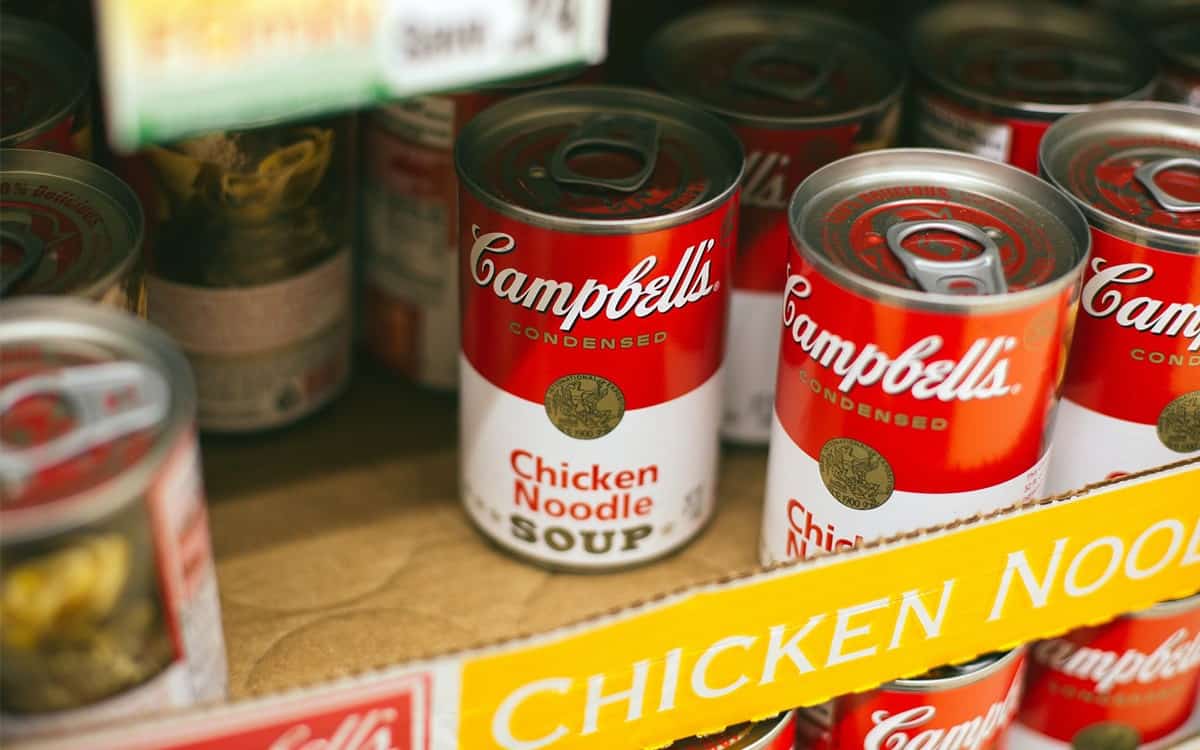
Canned soup and broth are great for hydration during a SHTF situation since the majority of their content is water. But, you should take note of their salt contents. Although salt helps to prolong the shelf life of canned foods, it may also cause dehydration if consumed in high quantities.
Canned soup usually contains meat, vegetables, or a combination of both – some canned soups even have fruit pieces in them. Canned broth is also made of vegetables, meat, or both, but unlike canned soup, it doesn’t have solid contents. The broth is cooked by simmering the ingredients (meat, bones, vegetables), then filtering them out to retrieve the actual broth.
Both can be heated directly in their cans – just remove the top lid to avoid pressure build-up inside them during heating. You can even eat canned soup cold. These easy-to-prepare canned foods are great at providing vitamins and minerals to the body. In addition, they have long shelf lives, making them ideal for long term storage.
The following are good canned soup and broth brands suitable for long term storage:
- Campbell’s Condensed Chicken Noodle Soup
- Swanson Chicken Broth
- Campbell’s Condensed Cream of Mushroom Soup
- Kirkland Roast Beef in Beef Broth
- McDougall’s Split Pea Soup
Canned Fruits (Shelf Life: 1-2 years)
Fruit, like vegetables are packed with essential nutrients and vitamins, because they’re composed of water and sugar they’re also excellent for hydration. While fresh fruits are healthier canned ones last a lot longer.
Canned fruits have a higher sugar content than fresh fruits. Hence, people with diabetes are advised to avoid them. There are some canned fruits with lower sugar content or none at all, but most of them have shorter shelf lives.
There’s a wide variety of canned fruits on the market. Some of the most popular ones, that are suitable for long term storage, are:
- Mixed Fruit: Dole Tropical Fruit Salad
- Berries: Oregon Fruit Blueberries in Light Syrup
- Pineapple: Dole, Pineapple Chunks in Juice
- Orange: Dole Mandarin Oranges Can
- Peaches: Del Monte Peach Slices
- Pears: Del Monte Pear Halves in Juice
What Do the Different Date Labels Mean?
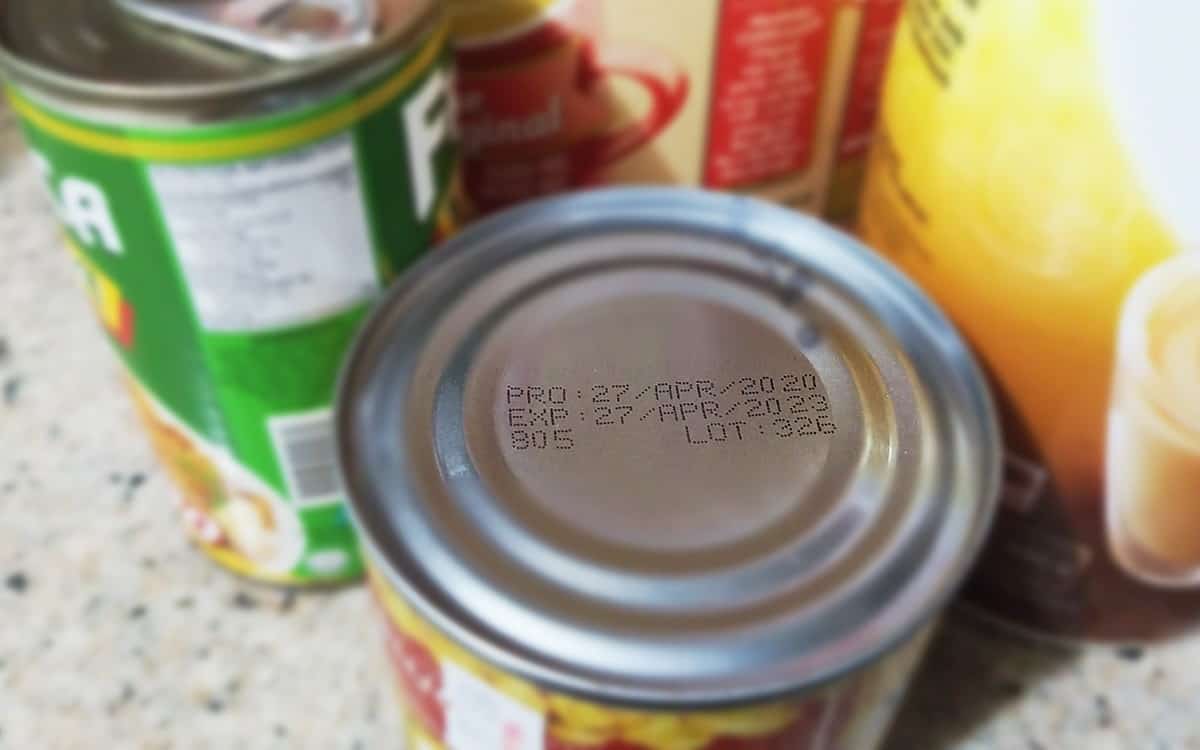
Product dating or date labels on food products are not safety dates. In fact, it is not mandated by Federal regulations, except for infant products.
Manufacturers print date labels on their products to ensure that buyers consume their products at their peak quality. Food products beyond their date labels are still safe to consume unless there are clear signs of spoilage.
The following are the most common terms used by manufacturers to label their food products:
Best if Used By Date
This label indicates the date up to when a product is still at its best quality. Beyond this date, the food is still safe to eat as long as mold, sour taste, or unpleasant smell haven’t developed yet.
Use By Date
This date determines the last day on which the product is at its peak quality and still contains the original amount of nutrition. It is usually used for infant products, but it’s not often used for canned meat, vegetables, and other canned foods.
Sell By Date
This label is mainly for inventory purposes. It indicates how long a product should stay displayed on a store’s shelf.
Expiration Date
Usually, this label is dated three years from its manufacturing date. Similar to other date labels, it does not indicate safety. Instead, it shows when canned food will start to lose its nutritional value, and its texture and flavor might start changing.
Factors Affecting the Shelf Life of Canned Food
The shelf life of canned foods varies due to several factors:
- the type of food
- ingredients and additives
- storage
Type of Canned Food
There are two main classifications of canned food: Low Acid and Acidified Canned Food. Each conforms to the safety standards set by the FDA to avoid microbial contamination – a common health threat caused by Clostridium botulinum from improper food processing and canning.
Low acid canned foods (LACF) have a pH of around 4.6 or higher. The common foods that fall under this type are canned meat and vegetables. Most manufacturers sterilize this type of food to ensure further the elimination of microbial spores before canning.
Acidified canned foods (ACF), on the other hand, have a pH of 4.6, but most manufacturers further lower it to 4.2. This type commonly includes pickled vegetables and eggs. They also undergo commercial sterilization like LACF, but they are considered much safer from microbial contamination due to their lower pH level.
In general, ACF has a shelf life of 1-2 years, while LACF has around 3-5 years.
Sauces
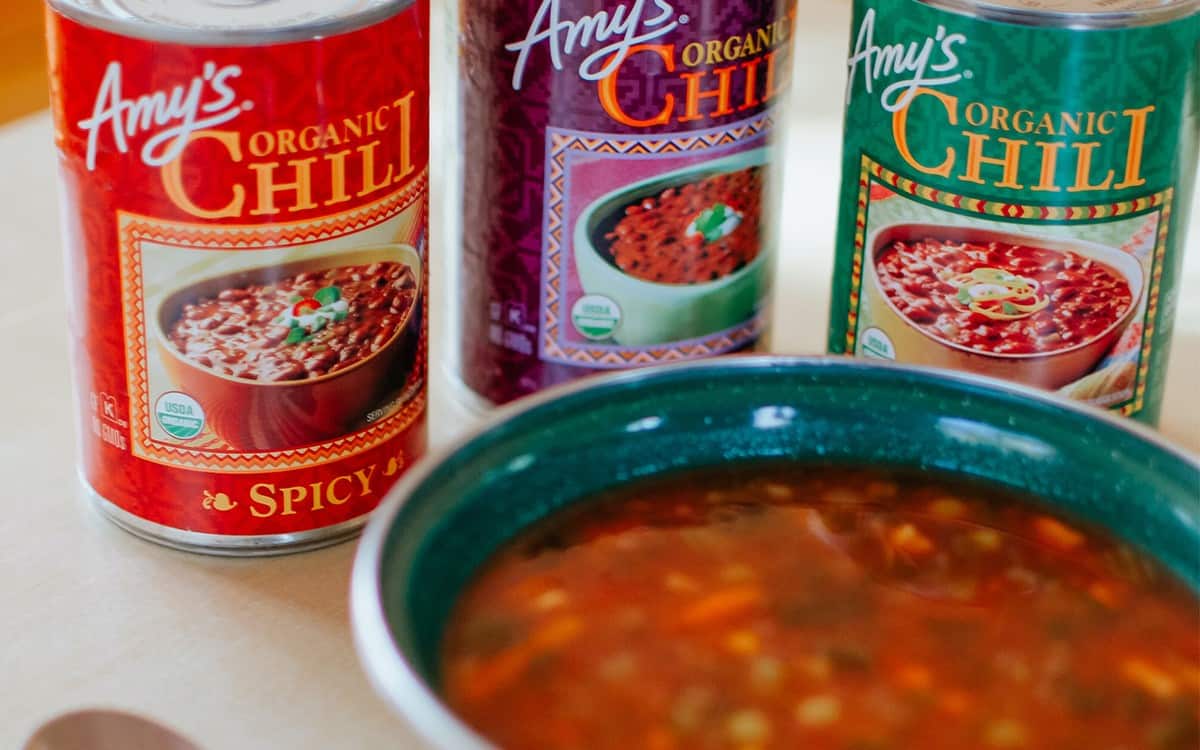
Sauces contain ingredients that go bad faster than the main component of canned foods, thus canned meat without sauce can last longer.
Storage Environment
You should keep canned food in a cool and dry place where the temperature is quite stable and doesn’t fluctuate drastically. The ideal temperature is below 85°F, but not too low to cause freezing – around 50 to 70°F is good enough.
Avoid placing the canned foods under direct sunlight. Doing this may cause thermophilic bacteria to reproduce and grow inside the can, contaminating its contents and increasing the spoilage rate.
When restocking your canned foods, be sure to rotate your supplies. Place old stocks in the front and new stocks at the back. Although canned foods can last for a long time on your shelf, it is still better to consume fresher ones. Avoid storing them for more than a year to ensure that you are consuming them at their peak quality.
Signs that Canned Foods are Not Safe to Consume
Bulging and Rusting Can
Can rusting and bulging indicate an improper canning process. You should not consume canned food if you see any of those signs because there’s a high risk of poisoning due to microbial contamination or other forms of external contamination.
Strange Texture and Flavor
Beyond their best-by dates, canned foods start to lose their original quality. A minor change in color, taste, and aroma is expected. However, if the changes are too extreme, you should not risk eating them. Food poisoning is the last thing you want to suffer from during a SHTF situation.
Final Thoughts
There are different types of canned food available on the market and almost all are suitable for long term storage. They can last for a few years, and you can further extend their shelf lives by storing them properly. Most of them can be consumed past their expiration dates, but expect some changes in their texture and flavor. However, despite their safety, it’s still best to consume canned goods that haven’t passed their best-by date. Only eat expired ones if you have no other options.
